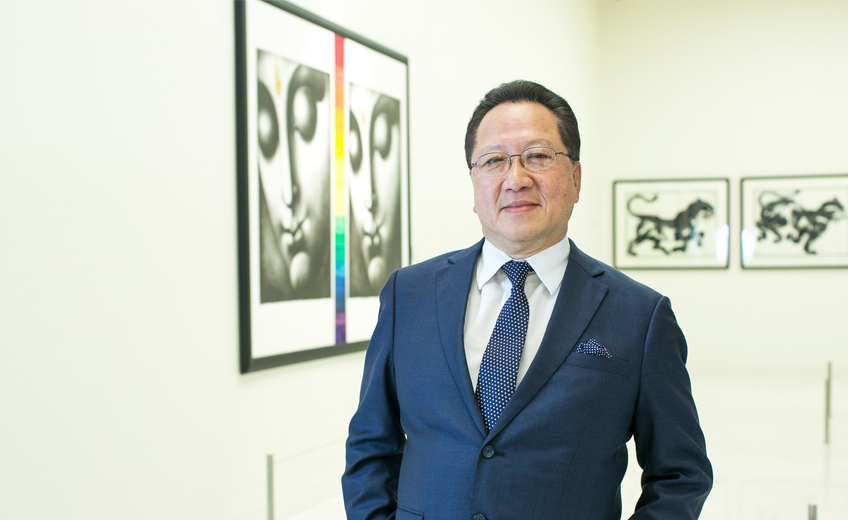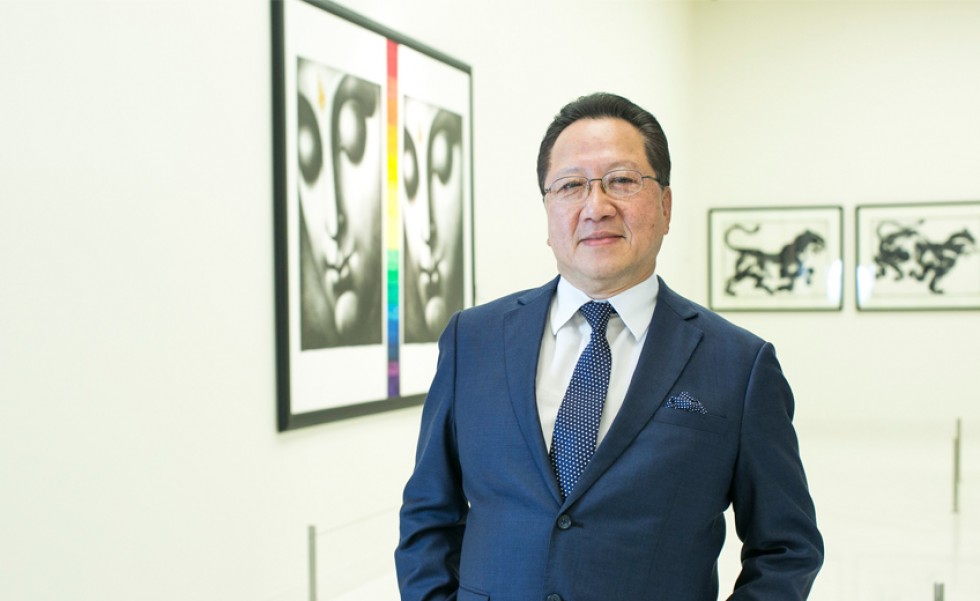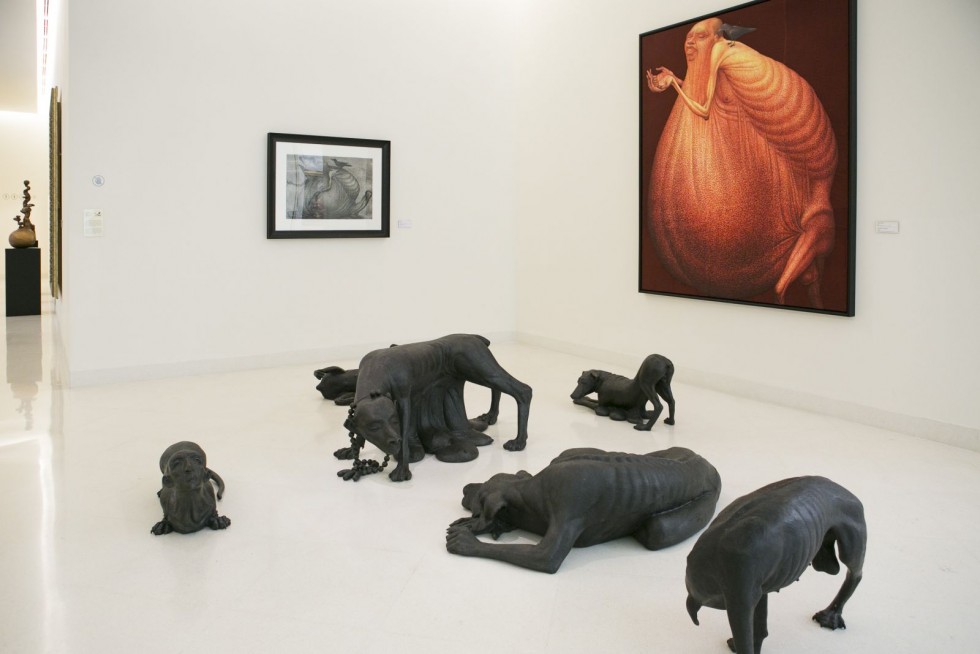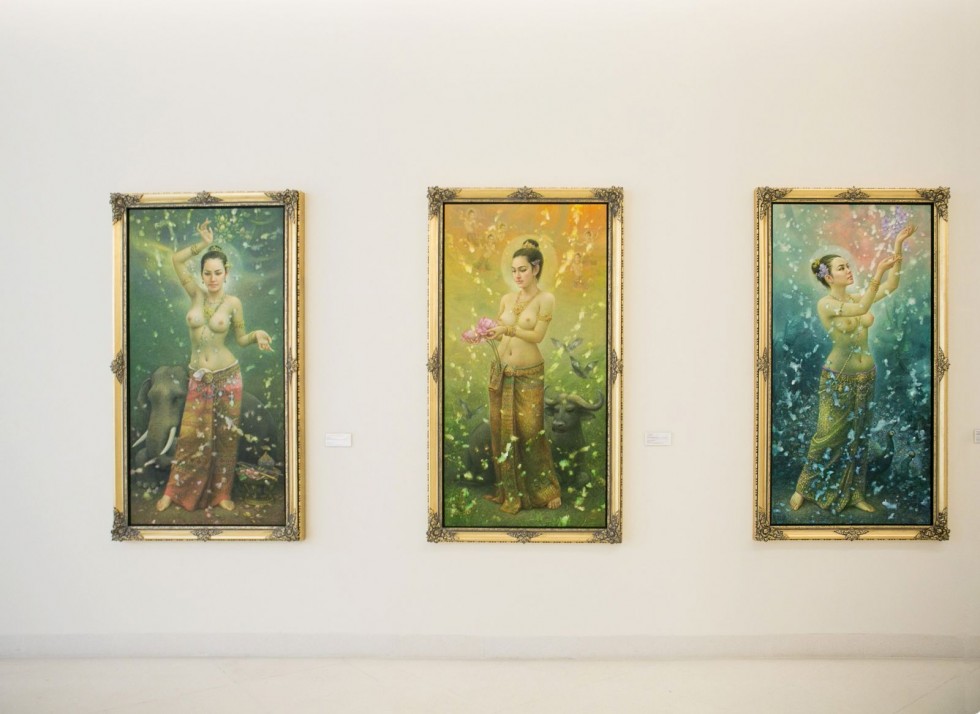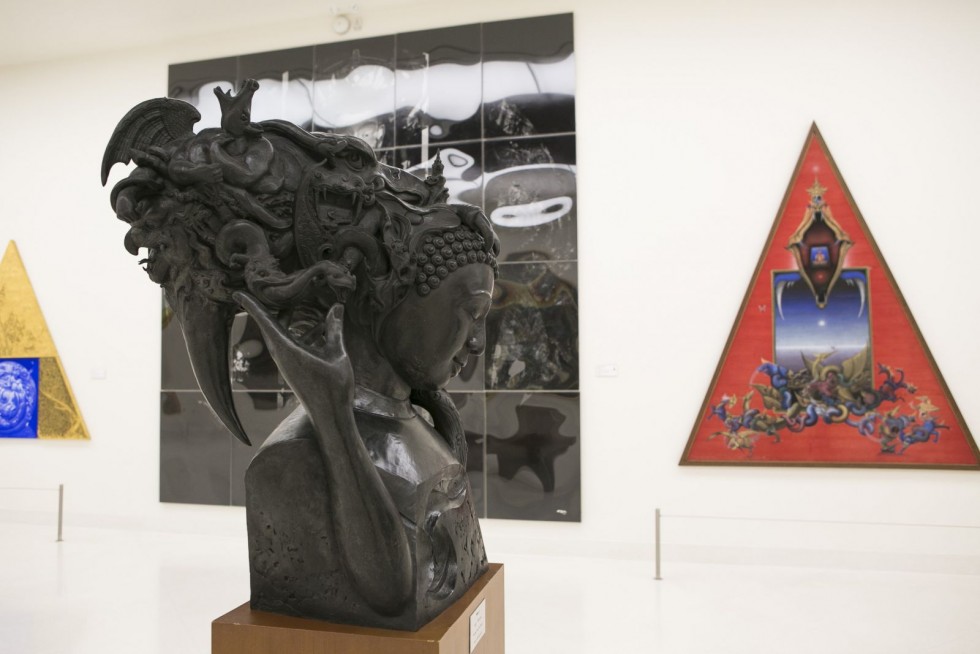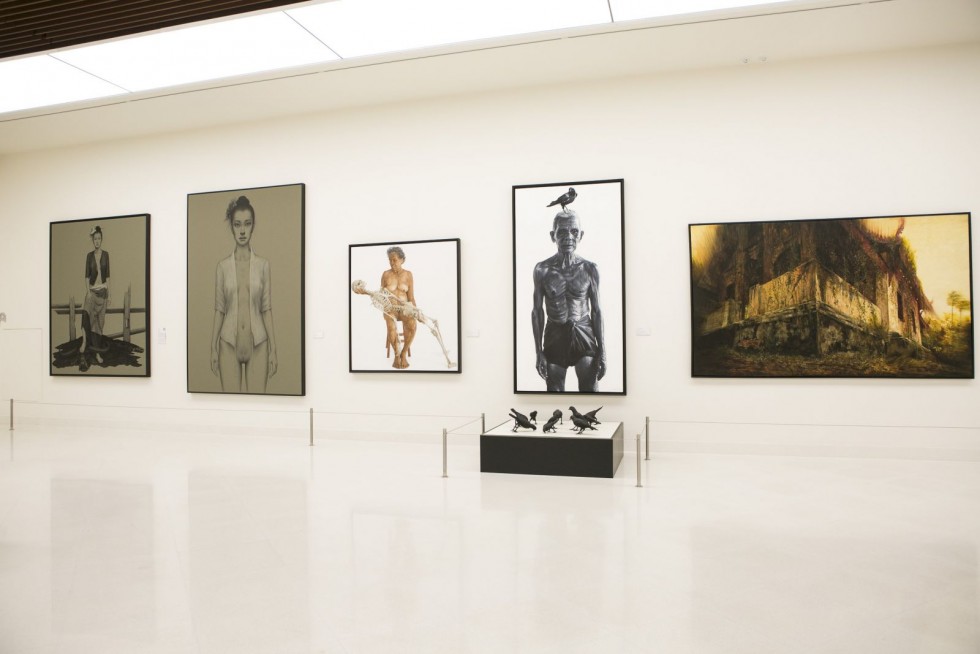While many business moguls set their eyes on profit and look to conquer an industry, Boonchai Bencharongkul does it differently. A highly successful businessman at the helm of several ventures, Boonchai is chairman of Total Access Communication (DTAC), Benchachinda Holding Co, Ltd and Ruam Duay Chuay Kan Samnuek Rak Ban Kerd Foundation, as well as an avid supporter of the Thai art scene. Six years ago, Boonchai established the Museum of Contemporary Art (MOCA), Thailand’s first contemporary art gallery dedicated to Thai art, with an extensive display of his private collection over the past three decades.
You are among the most successful businessmen. What is the key to your success?
The secret to success is diligence and honesty, which I inherited from my parents. My father used to teach me that money is everywhere; it depends on how we can get it.
My first job was as an insurance agent. At the time, I never understood my father’s intention to assign me that job. It was tough because I didn’t know how to sell insurance. When I started to convince people to buy insurance for their property or themselves, I got chased away all the time. It was considered bad luck and inappropriate to tell anyone that their medical bills from an accident or replacement fee of a burned house would be covered if they bought insurance.
But right before his death, my father revealed the intention behind the first assignment. I was told that if I could sell insurance policies, which is only a promise written down on a piece of paper, I could do 9 • Elite+ Magazine • www.eliteplusmagazine.com any business. Selling a piece of paper is selling trust to someone.
His words echoed in my mind all the time, especially when I took over the business after my father passed away. When I was encountering a tough time, right after his death, I was awarded a project without a competitor from a phooyai (respected figure) who was a good friend to my father. But I was told to calculate the level of profit revenue in accordance with a level the State Audit Office of the Kingdom of Thailand (SAO) would accept as a practical fair business transaction, and to use the profits to pay off the debts. The favour was paid back to me because the phooyai was impressed by my father’s honesty, and my business started to pick up. I then realized that I didn’t need to leave a big fortune for my children but good deeds for others to remember. This way, my children will later be offered help and opportunities the way I did from my father’s friends.
My parents often took me to the temple and I still go to the temple to offer food to the monks every morning. And that helped me realize how to be satisfied with what we have.
How do you see yourself as a businessman?
I’m different from other business people. While my subordinates were trying to report the rise and fall of customers, I always reminded them that our existing clients are the priority, as they are the ones who keep our business running. After discovering myself quite unfortunate about managing subordinates, I offered the management position to my younger brother so I could focus on social work.
Our idea is: big corporation helping small businesses all the way down to the little people on the farm. We are trying to provide technology that helps enhance the agricultural sector. We’ve worked with a start-up business on an application called Recult that provides weather forecasts for farming. The forecast is very precise down to the plot and not just the surrounding area or the whole village. The 60-day trial period for the app is free of charge, but you have to pay only one baht a day if you want to continue to use it. An opportunity to enhance the farmers’ capability will help them grow. Being a source of food for the world will make our country prosper and be sustainable.
Why is social work so important?
Twenty years ago we started a programme to cultivate a new generation of social awareness for young adults, with cooperation from the Ministry of Education. At the time, we were fortunate to have the support of the permanent secretary of the ministry, Dr Kovit Vorapipat, who assigned the directors of the education office of all provinces in Thailand to help us select 999 students to enrol in our “Rak Ban Kerd” programme. We give them the tuition fee for each term and every year we create a camp to bring them together. Some years we have a special camp to go and build schools, some years to learn many different skills to help out society, teaching them to be able to understand corporate social responsibility (CSR) once they graduate and join a big corporation. Approximately 80% of the 12 classes of Rak Ban Kerd graduated with a university degree, some even made it through medical school, military cadet school and many return home to be a teacher.
Then 10 years ago we started the second phase of our plan to help local agricultural communities to be better equipped with knowledge and the use of technology by starting the Rak Ban Kerd Farmer award each year for very different categories, ranging from “Farmer Guru”, “Makes practical use of local knowledge” , “Organic farming”, “Farmer online”, all the way to this year's “Leader of sustainable change”.
We have spent over 300 million baht over the last 20 years to equip both young adults from the Sumneuk Rak Ban Kead programme and enthusiastic farmers with the new theory of the sufficiency economy of HM the late King Bhumiphol Rama IX, now known as “the science of the King”.
You are also well known as an art collector. How did it start?
I always wanted to become an artist. But being the eldest brother of a Thai-Chinese family, I was obliged to take over the family business. Before my father passed away, he left me the mission to provide good care of my mother and younger siblings, as he had done. It was huge pressure but I gave my father a promise that I have never forgotten. At 27, I inherited the family business and 300 million baht in debt. I had to figure out solutions to not lose all of the businesses by selling some and keeping some. I was also fortunate that some friends of my father offered help when they attended his funeral. But I knew I would come back to art someday. During those years, I started buying art pieces. The first one was bought 30 years ago for 4,000 baht when I earned only 10,000 baht a month.
How did you come up with the idea for the Museum of Contemporary Art?
This was a splendid idea that the late artist Thawan Duchanee toyed with. I spent about 20 years under his guidance in art. We would meet for a meal, followed by a tour of his new artworks. He would tell me the stories behind each piece and he would allow me to be alone to make a selection. Sometimes the talk went on until three in the morning.
I was always the first to see his new works after they were completed and I could buy them at a special price. But the deal was made on the condition that I would build a museum to be the home for artworks by Thai artists. So I started looking for a plot of land 20 years ago, and found one on Vibhavadee Rangsit Road. Had I spent more on a plot of land in the city, I would not have had any money left to buy a collection. And I intentionally built the gallery next to my office, to make it easier for me to walk to and from work. Since then, he never stopped giving advice and suggestions on art and whose works to collect.
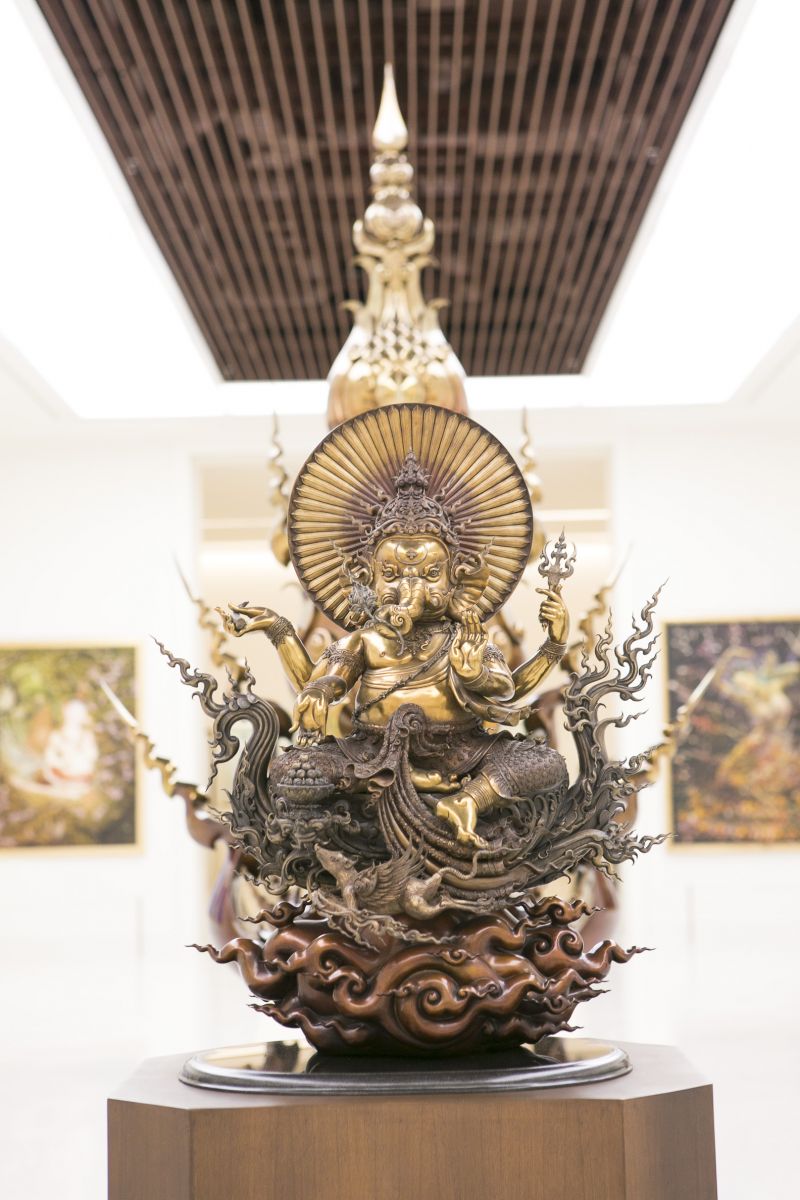
What is your curatorial concept for the gallery?
Art is symbolic of civilization; it represents culture, a way of life and the intellect of the people. We curate over 800 paintings and sculptures and photos to represent our Thai way of life, our beliefs and the values we hold. For example, if a Thai person dreams of a snake, the bigger it is in the dream the more likelihood there is for us to meet our partner in life. And this is called a “good dream”, but it would be opposite if a Westerner dreams of a snake, more on the evil side.
On the fifth floor, we created a Western art room showing paintings from Britain during the Queen Victoria period, which is around the same era as King Rama V, King Chulalongkorn. We named the room the “Richard Green” room, which is the name of the gallery we purchased these prints from. The purpose of creating this room was firstly to show the refined work of European painters and secondly to show our Thai visitors that our Thai painters, Thai artists, are equally good in creating refined artworks.
What’s your next step for the gallery?
I want to be able to change the temporary exhibitions in the two temporary rooms more often. But running a gallery isn’t easy. Look at how the Bangkok Art and Culture Centre is facing a hard time right now. My first wish at the moment is to be able to make the gallery financially sustainable. At the moment, it’s been strongly supported by my youngest brother. It’s hard to convince Thais to visit a gallery because it’s not our thing to go to a museum. About 70% of the visitors are foreigners, while Thai visitors are about 30%.
Meanwhile, I’m also trying to expand my collection. Currently I have over 2,000 pieces of art but only 864 pieces are being exhibited in the gallery. If I could make the gallery financially sustainable and be able to create more space, I will devote the second section to photography.
How do you encourage Thais to visit a gallery?
I tried to invite young students from Bangkok Metropolitan Administration schools to come and appreciate our art collection, but it’s so complicated. The schools required me to provide shuttle buses and lunch. It’s too much to be responsible for hundreds of students, both for their safety and expenses. I wish I could give more than just free entry for these children. But if you are under 15 or over 60, you can definitely enjoy free entry to MOCA every day. And you will see how enjoyable a day with art pieces and open space with trees can be.
I know our venue is hard to access, but also hope the completion of the SRT Red Line that will pass right in front of the property will draw more people to the gallery.
How do you manage your time between business, art and family?
I rarely have free time on my own, and all of my free time is simply given to my family. Every morning, I wake up early to make an offering of food to monks and then I come home at around 7am to send my youngest son [with current wife, former actress Bongkod Bencharongkul] to school. Then I go to work at my office, where I meet my son again after he finishes school. Then we go to the gym together before going home for dinner. Sometimes I bring him to meet his older siblings. At weekends, he has special classes on Saturday morning, so I have to make myself available for him in the afternoon to teach him how to swim. And some weekends I go to open important exhibitions at the National Gallery or private galleries, giving continued support to the artists, both established and newcomers.


